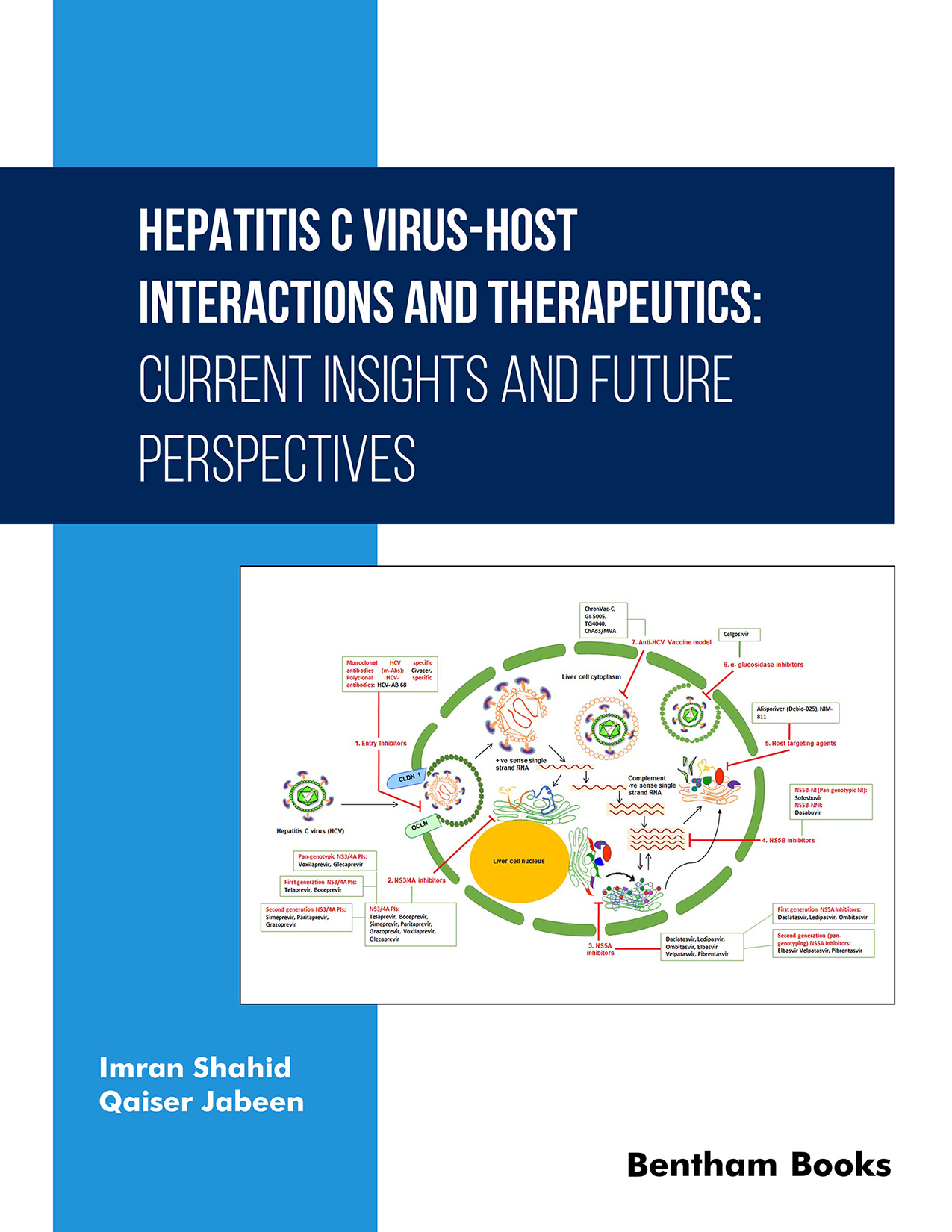The public health care burden of hepatitis C virus infection remains significant
despite the remarkable progress in HCV therapeutics during the last decade, as
around 58 million people are currently having the virus and almost 4,00,000 deaths
are reported annually due to hepatitis C-induced hepatocellular carcinoma. The
advent and approval of a dozen oral interferon-free direct-acting antivirals have
revolutionized the treatment paradigms for hepatitis C infection while achieving
higher sustained virologic response rates (>95%) in treated individuals.
Analogously, HCV and host interactions to map networks in disease progression,
extrahepatic manifestations, and virus invasion strategies to the host immune system
are still enigmatic to fully understand. Albeit, ample understanding of HCV life
cycle in vitro and transient in vivo replication
models, provide valuable insights towards the viral entry, genome replication,
virion formation, and host infection involving a highly orchestrated series of
molecular and cellular events, including a plethora of genes and cell signaling
cascades. However, questions remain to answers regarding the virus clearance without
any therapeutic intervention in some HCV-infected populations, molecular
pathogenesis of infection transforming the acute hepatitis C infection to end-stage
liver disease, post-viral eradication, hepatocellular carcinoma, and the fate of the
immune system once the virus eliminates from the body.
This book intends to provide
insights into what has
been achieved in HCV infection biology, virus-host interactions, molecular
epidemiology of the infection, and the full spectrum of immune responses to
hepatitis C, either the involvement of innate or adaptive immune responses in the
first three chapters. The following chapters 4 and 5 comprehensively illustrate the
simplified HCV diagnostic solutions, predictive barriers, and future perspectives
for general, as well as vulnerable HCV infected populations, along with the
up-to-date procedural and protocol guidelines for HCV diagnosis. Book Chapter 4 also
highlights the strides toward a better understanding of HCV screening and diagnostic
strategies for high throughput anti-HCV screening and diagnosis, applications for
risk prediction tools, and cost-effective analysis of current diagnostic in the
hepatitis C cascade of care. The next four book chapters (from chapters 6 to 9)
precisely and comprehensively illustrate the current landscape of HCV treatment,
their administration, consensus treatment guidelines for their recommendations, and
their real-world treat outcomes. These book chapters also provide the probable
answers to some fundamental questions like why some HCV-infected populations are
nonresponsive to IFN-free DAAs, the phenomena behind viral relapse, and reasons
behind treatment failure in harder-to-treat specific HCV subpopulations. Within
those book chapters, chapter 9 also emphasizes real-world challenges in HCV
therapeutics to unleash certain barriers while making it possible to expand the
scale of therapy, and the cascade of care, and bridge existing gaps in hepatitis C
care between developed and poor nations. Chapter 10 of the book overviews the
emerging anti-HCV treatment strategies in the pipeline and explains the efforts to
do while refocusing on anti-mRNA-based treatment strategies and nanomedicine-based
approaches used in conjunction with DAAs for hepatitis C. The book chapter also
portrays some glimpses into the future for the design of controlled animal and human
HCV infection models for the design of an appropriate but effective prophylactic or
protective anti-hepatitis C vaccine model. The last two book chapters (chapters 11
and 12) discuss the goals, policy implementation, and progress of the Global Health
Sector Strategies (GHSS) 2016-2021 on HCV worldwide in the last decade as well as
the cross-cutting barriers to break and actions to be taken in this decade while
achieving the global goal of HCV elimination by 2030. The final chapter of the book
also describes the strategies to opt at hospitals, community services centers,
health care service providers, and government levels to prevent new HCV incidences
and reduce HCV-related morbidities and mortalities with concrete efforts, collective
will, and public health notes to galvanize the efforts to eradicate this epidemic
worldwide by 2030.
Overall, this well-written book provides from simple, accessible introduction to a
complex hepatology field, and in-depth information about HCV basics, clinical
diagnostics, and therapeutic knowledge to all stakeholders involved in HCV
screening, diagnosis, treatment, and management. Without being exhaustive or
redundant, it can be easily accessed to concepts by extensive cross-referenced
studies. We hope that this book will enhance the knowledge of a common reader about
hepatitis C infection, its diagnosis, and treatment, and provide answers to the
physicians, clinicians, hepatologists, infectious disease experts, health care
providers, and investigators to some of the outstanding problems in the
ever-changing field of hepatitis C research.
CONSENT FOR PUBLICATION
Not applicable.
CONFLICT OF INTEREST
The authors declare no conflict of interest, financial or otherwise.
ACKNOWLEDGEMENT
Declared none.
Imran Shahid
Department of Pharmacology & Toxicology
Faculty of Medicine
Umm-Al-Qura University
Makkah, Saudi Arabia
&
Qaiser Jabeen
Department of
Pharmacology
Faculty of Pharmacy, The Islamia University of Bahawalpur
Bahawalpur,
Pakistan

